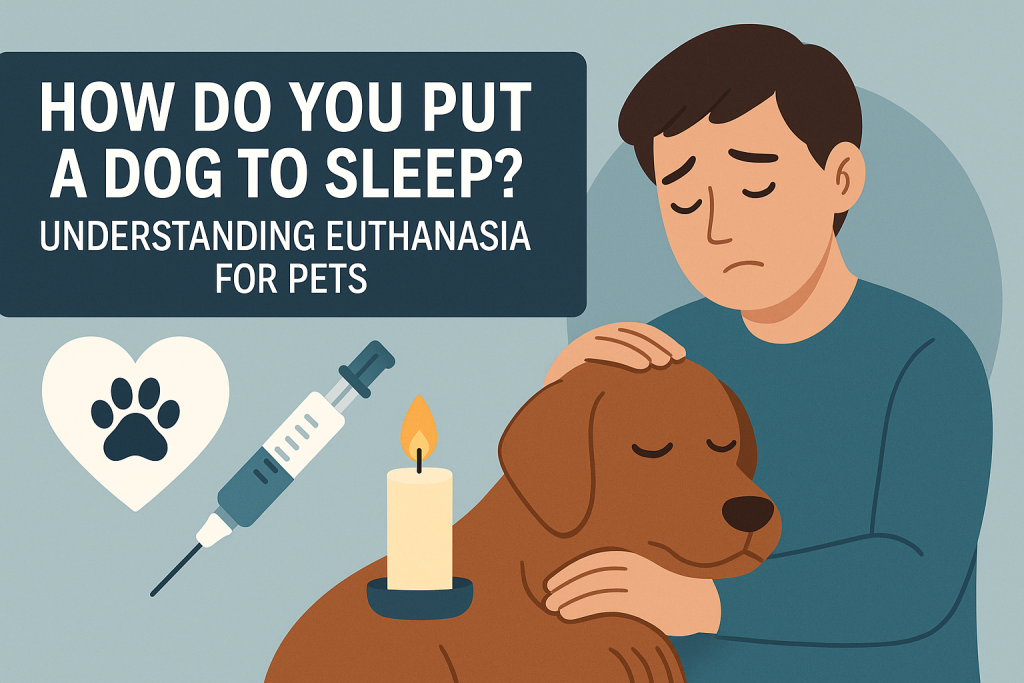Facing the decision to put a beloved dog to sleep is one of the most difficult and heart-wrenching experiences for any pet owner. Understanding the process of humane euthanasia, the signs that indicate it may be time, and what to expect can help you make the most compassionate choice for your loyal companion. This guide explains everything you need to know about putting a dog to sleep, including emotional considerations and ways to cope with the loss.
What Does It Mean to Put a Dog to Sleep?
To “put a dog to sleep” is a gentle way of referring to humane euthanasia — the act of peacefully ending a dog’s life to relieve suffering when recovery is no longer possible. This is done through veterinary-administered medication that causes the dog to pass away painlessly and with dignity.
Why Consider Euthanasia?
Dogs, like humans, can face illnesses or injuries that create unmanageable pain, suffering, or loss of quality of life. In such cases, euthanasia is considered the kindest final gift for your pet. Some common reasons to consider putting a dog to sleep include:
- Chronic pain or disease with no hope of recovery
- Severe injury that cannot be treated
- Terminal illnesses such as cancer
- Loss of mobility or incontinence affecting daily life
- Extreme old age leading to suffering
How Do You Know When It’s Time to Put a Dog to Sleep?
Deciding when to say goodbye to your dog is deeply personal and often agonizing. Watch for the following signs indicating your dog may be suffering:
- Persistent pain that cannot be managed with medication
- Frequent vomiting or diarrhea that does not improve
- Loss of appetite, refusing food and water
- Difficulty standing, walking, or breathing
- Loss of interest in favorite activities or interactions
- Incontinence and loss of control over bodily functions
- Confusion, anxiety, or signs of distress
Consult with your veterinarian to assess your pet’s quality of life. There are quality of life scales and checklists that can help you evaluate your dog’s condition objectively.
The Euthanasia Process: Step by Step
1. Consultation with Your Veterinarian
Your vet will discuss your dog’s health and help you determine if euthanasia is the most humane option. They will explain the process, answer your questions, and respect your wishes about how and where the procedure should take place.
2. Preparing for the Procedure
- Decide whether you want the procedure performed at the veterinary clinic or at home (some vets offer in-home euthanasia services).
- Consider who should be present — family members, children, or other pets.
- Bring a favorite toy, blanket, or treat for comfort.
- Discuss post-euthanasia options such as burial or cremation with your vet.
3. The Euthanasia Injection
The procedure is peaceful and painless. It generally involves two steps:
- Sedation: Your dog is often given a mild sedative to relax and drift into a deep sleep.
- Euthanasia solution: A veterinarian administers a medication, usually an overdose of an anesthetic (such as pentobarbital), which quickly and painlessly stops the heart.
Your dog will not feel pain or fear. Most dogs pass away gently within seconds to a few minutes after the injection.
4. What Happens After Euthanasia?
You will have time to say goodbye and grieve. Your vet can help you arrange aftercare, such as:
- Private or communal cremation
- Return of ashes in a memorial urn
- Home burial, if permitted by local laws
- Paw print keepsakes or other mementos
Coping with the Loss of Your Dog
Losing a pet is a profound loss. It is normal to grieve and feel a range of emotions, from sadness and guilt to relief and gratitude for ending your dog’s suffering.
Ways to Honor Your Dog’s Memory
- Create a photo album or scrapbook
- Plant a tree or flowers in their honor
- Hold a memorial service with family and friends
- Commission a portrait or keepsake
- Consider volunteering or donating to an animal charity
Supporting Yourself and Family
Grieving takes time. Reach out to support groups, professional counselors, or pet loss hotlines if you need extra support. Involve children by allowing them to express their feelings and honoring the pet in their way.
Frequently Asked Questions About Dog Euthanasia
Is euthanasia painful for dogs?
No, dog euthanasia is designed to be completely painless. The medications used cause pets to fall unconscious and pass away without suffering.
Can I be present when my dog is put to sleep?
Yes, most veterinarians encourage owners to be present to comfort their dog and say goodbye. You may also opt to have the procedure done privately if you prefer.
How much does it cost to put a dog to sleep?
The cost varies depending on your location, the size of your dog, and whether you choose in-home or clinic euthanasia. On average, it ranges from $50 to $300, with additional fees for cremation or burial services.
How do I explain putting a dog to sleep to children?
Use gentle, age-appropriate language. Explain that the pet was very sick or old and that putting them to sleep was a way to prevent further suffering. Encourage children to share their feelings and remember the happy times with their dog.
Conclusion
Knowing how to put a dog to sleep and when to make this decision is an act of love and responsibility. By preparing yourself and seeking support, you can give your dog the peaceful farewell they deserve and honor the bond you shared for a lifetime.

